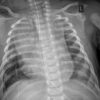NEW YORK (Reuters) – An analysis of geographic and temporal trends in multisystem inflammatory syndrome in children (MIS-C) support the view that MIS-C results from delayed immunologic responses to SARS-CoV-2 infection, researchers report.
Dr. Ermias Belay from the U.S. Centers for Disease Control and Prevention, in Atlanta, and colleagues analyzed data on 1,733 patients with MIS-C in what is the largest cohort of MIS-C cases in the United States to date.
The United States has experienced three peaks in diagnoses of MIS-C – the first in early May, the second in early August, and the third in December, they report in JAMA Pediatrics.
The first two peaks followed the peaks for the COVID-19 pandemic by 2-5 weeks, while the third peak seems to follow the rise in the COVID-19 pandemic, they say.
The first MIS-C peak was largely because of patients from the Northeastern region of the United States, coinciding with the predominance of the COVID-19 pandemic in the same region. The second peak largely involved patients associated with the COVID-19 pandemic centered in the South and West regions.
These findings provide “further validation of the prevailing hypothesis that MIS-C is a postinfectious mediated disorder, given the temporal and geographic distribution of MIS-C with COVID-19,” write Dr. Jennifer Blumenthal and Dr. Jeffrey Burns with Boston Children’s Hospital in a linked commentary.
More than half of the patients in the cohort were male and, consistent with the COVID-19 pandemic, MIS-C disproportionately affected Hispanic and Black children and adolescents, although the proportion of patients who are non-Hispanic White increased over time, Dr. Belay and colleagues report.
Gastrointestinal symptoms, rash, and conjunctival hyperemia were reported by 53%-67% of patients; 54% had hypotension or shock and 58% required intensive care. Twenty-four patients (1.4%) died.
Cardiac dysfunction was reported in 31% of cases, pericardial effusion in 23%, myocarditis in 17% and coronary artery dilatation or aneurysms in 17% of cases.
In the vast majority of cases (90%), illness manifestation involved at least four organ systems.
The clinical manifestations varied by age. The youngest patients (up to 4 years old) had the lowest proportion of severe manifestations, which follows trends of mild or asymptomatic COVID-19 in young patients. Patients aged 18-20 years had the highest proportions with myocarditis (31%), pneumonia (36%), and acute respiratory distress syndrome (18%).
Notably, say the researchers, most patients in the cohort did not have COVID-19 symptoms before developing MIS-C.
Overall, among 1,075 MIS-C cases with available information, only a quarter had COVID-19 symptoms present at least 7 days before MIS-C onset. Older adolescents had the highest proportion reporting preceding COVID-19–like illness.
“As the COVID-19 pandemic continues to spread, physicians should consider MIS-C to promptly diagnose and treat children and adolescents,” Dr. Belay told Reuters Health by email.
“To prevent the spread of COVID-19 and occurrence of MIS-C, families should continue to follow preventive measures such as wearing masks, social distancing, frequent hand hygiene, and receiving COVID-19 vaccine as soon as they qualify. Physicians should report suspected MIS-C patients to local and state health departments,” Dr. Belay advised.
In their commentary, Dr. Blumenthal and Dr. Burns say this study provides “more precision on the range of presenting symptoms and outcomes, including cardiovascular disease.”
“Going forward, the pediatric community now has a more refined understanding of the presentation of the subtle differences between a child presenting with COVID-19 or MIS-C. Most prominently in differentiating between these 2 processes, the lack of prior COVID-19 symptoms, especially in the younger age group, should not reassure pediatric practitioners that this child is risk free of potential cardiac manifestations from MIS-C,” they write.
“If the entirety of the world’s pediatric population is at risk for COVID-19 and vaccination will be delayed in the pediatric population, compared with adults, this potentially severe outcome must remain at the forefront of the differential diagnosis for pediatricians across the world pending further outcome research,” they add.
Reuters Health Information © 2021

